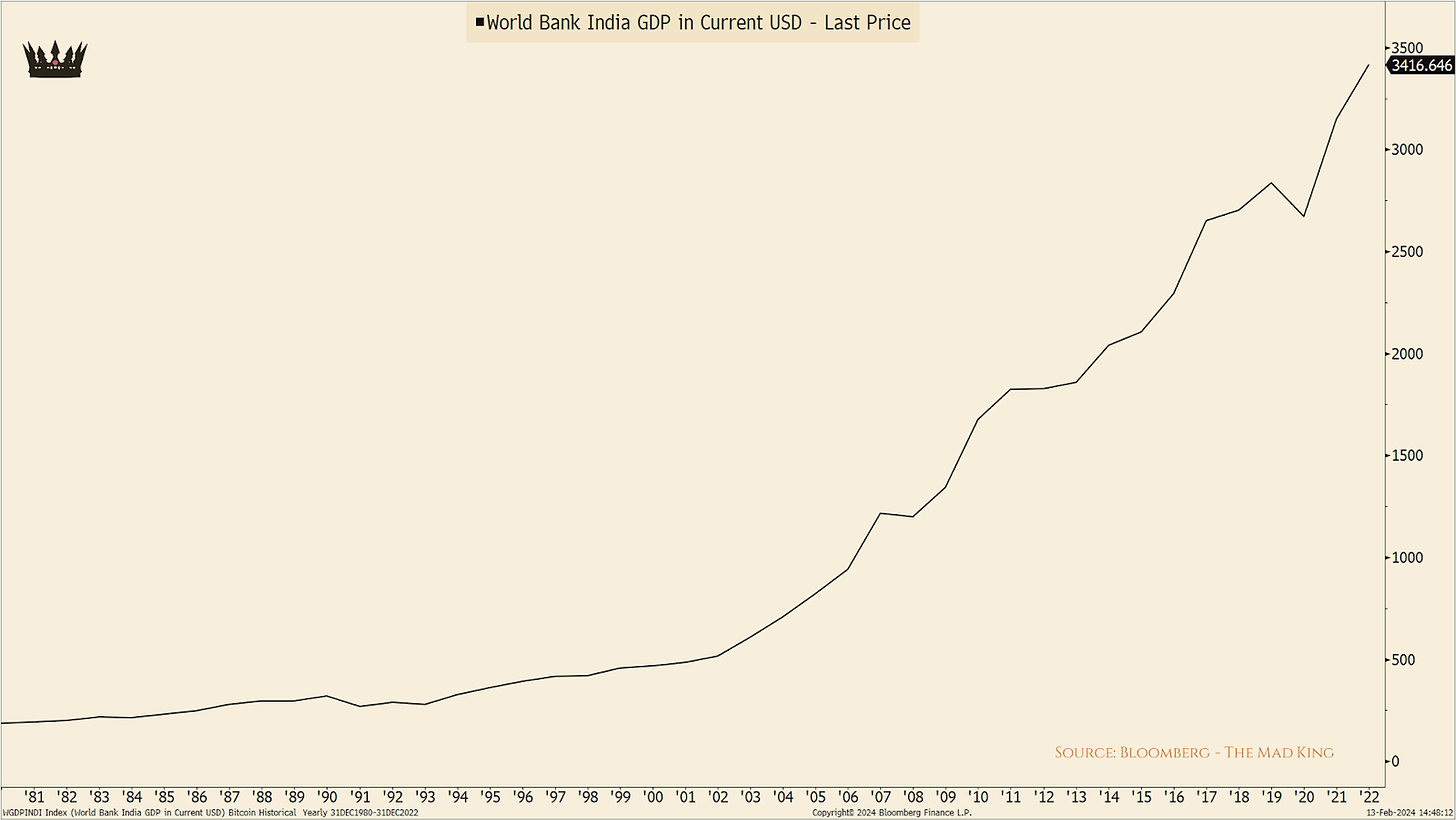
India was never on my bucket list and now my bucket list is full of India. Why did I NOT want to go? Like many poorly formed opinions and beliefs, it was based on little evidence and some vaguely held feelings. I thought it would be a mess and I would get sick. Well, it was and I did, fortunately only when I got back. But it was so much more than that. Before I launch into the trip – I will get there with some amazing photos and videos to add some color – it’s worth a few paragraphs about India as a country and an economy. You can go to Wikipedia, of course, or just stay here and get my take, which is based on a lot more than Wikipedia…but is not as authoritative.
As a quick, very high level background, India is an ancient civilization. The religions that comprise the majority population of modern India – Hinduism, Buddhism, Jainism and Sikhism – date to BCE, over 2000 years ago. India was invaded from the North by Mughal Emperor, Babur, in the mid-16th century. This period lasted until the early 18th century and was forfeited by the reviled Aurangzeb. During the Mughal era, Islam and India’s more traditional religions lived side by side, with some strategic intermarriage. Babur’s great, great grandson, Shah Jahan was born to a Muslim father, Jahangir and a Hindu mother, Jagat Gossain. It was Shah Jahan who built the Taj Mahal in honor of his wife Mumtaz, who died while giving birth to their 14th child!
The Mughal era gave way to the colonial era brought in by the arrival of the East India Company (it beat out several other European trading companies with superior naval power and firepower) in the early 18th century. It survived for over a century until it was eventually kicked out and gave way to direct rule by British administration – the beginning of the colonial project called the Raj . This era lasted about a century until 1947 when, responding to domestic pressure in India between certain powerful elements in the Muslim and Hindu communities, Lord Mountbatten drew a line between India and what is now known as Pakistan. The area in the North West of India called Kashmir continues to be disputed by India and Pakistan, as are certain border areas in the North East on the border of China.
India became the world’s most populous nation in June 2023 with 1.4B people.

Its demographic pyramid is healthy, unlike most of the rest of the developed world.

The arc of its projected development shows years of outpacing China, which is in relative decline and speaks to a very healthy future economically.

India’s stock market has shown classic SUATTR (steadily up and to the right) characteristics and seems ready to disconnect from China. Interesting to note that, while India’s ratio of stock market capitalization to GDP is around 1.3x (the US is around 1.8x), China’s sits at closer to 50%. Clearly, that ratio can be a function of the sophistication of the economy and the percentage of the industrial base that is represented by publicly traded companies. Usually, it is an indication of whether a market overall is overvalued or undervalued. In the case of China, it may have more to do with the portion of the GDP that is invested in real estate – not actually a happy place to be invested right now in China.

Its GDP is now $3.4T, which places it at 5th in the world.

Soon it will overtake Germany and Japan. While advancing in GDP and population growth, India has managed to lift ever growing portions of its population out of poverty and reduced inequality in the process.
A great deal of India’s growth is driven by infrastructure spending. Technology adoption and prowess and a growing population of increasingly well-educated people are huge advantage. At the same time, India is seeking to replace its status as one of the largest importers of arms (note the border conflicts mentioned earlier) with bolstering its own defense manufacturing both as a means to reduce the reliance on supply chains and as a means of capturing more of the value chain inherent in the re-shoring the manufacturing process.